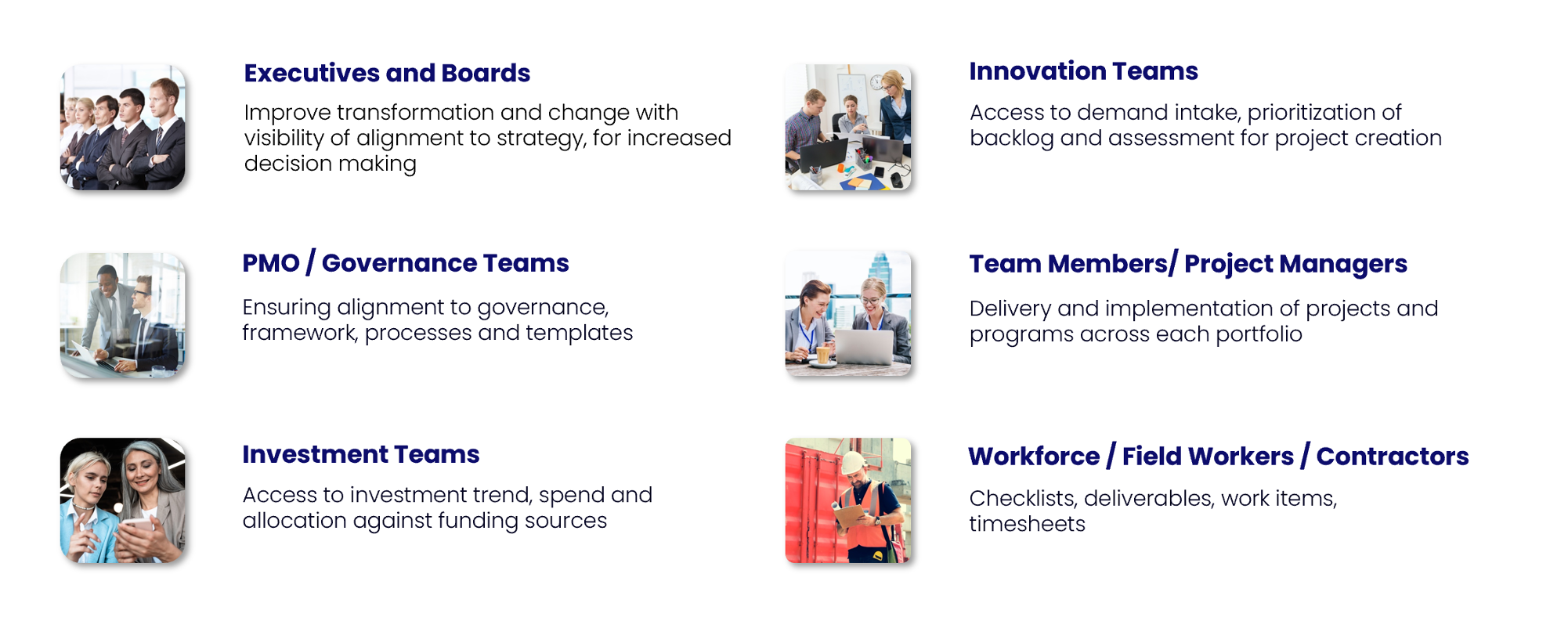The purpose of a PPM platform
Historically PPM platforms have been established in organisations to centralise project data, provide insights and and offer a centralised way of working. COVID however, has forced us down a path where organisations are looking for flexibility, agility, and improved process productivity management. A customer recently shared a great quote, he said to me..
We need a PPM platform to help us manage the process related to the delivery of how we manage projects. Not just a repository to store data but a platform to help us work smarter, every day we seem to be going through change..
I love this quote and to me it highlights that this person truely understands the purpose of what a PPM platform can do for an organisation. Too often we see customers so focussed on features.. but failure is typically related to a lack of understanding the requirements (both functional and non functional). Lets take a look..
# 1. Understanding your platform choice
Decide if your looking for a platform to offer you a turn-key solution OR if you need a platform that you want to DIY with your own resources. Let me give you an example here: A customer recently deployed SAP PPM because they assumed it would fit nicely within their SAP ecosystem, and it would be a simple extension to manage projects + their primary focus was financial management. Then they decided the wanted to customise it because PM's said I need a teams app, I need to link to SharePoint, and Planner, and Project (commonly used tools)..eek $2500 a day it cost for a dev..
# 2. Identify your decision makers
Don't let your internal IT teams and your CFO be the only decision makers. The choice of platform and review of the requirements should be endorsed by those using the platform. A CFO is always focussed on financials, and the IT architect will focuss on security and installation (now I'm not saying they shouldn't have a seat at the table) - but let's be honest here, the end user is a team member or a project manager. It's these teams who cost time and effort in delivering projects and remember - often the purpose of implementing these tools is to save $$, reduce risk, and be more productive. Below is an example of key stakeholders and use cases:

# 3. Identify the benefits
Like the delivery or implementation of any project, implementing a PPM solution cost money and therefore benefits should be clearly defined. If your looking for more detail on PPM benefits you may choose to read our blog Benefits of a PPM solution.
# 4. Surveys & Feedback
I love this requirement. I mean it's typically not hard to run a quick survey across your entire teams and ask them their current challenges and pain points are. Check out our PPM software survey template for hint's and tips. Once you know your audience level of maturity specific requirements might change.
Example: A customer recently told me:
"we can't move to Project for the Web because it didnt offer baselining or critical path functionality.."
My response "Jim, you've been a customer for 3 years, you've never used those features and your end users struggling to even do a weekly status report". So my point- don't get caught up on reading others blogs, stay focussed on your own requirements 😀
# 5. Process Management
Perhaps one of the most important requirements is identifying if you need a platform to help you manage the process of what you need to do . Example: If I choose a Tier one project, I can see the workflow change, and if I visit the document library I see different templates. Some platforms support process and some don't. Some platforms cost $$$$ to change it too - best to find out whats possible (or not possible).
# 6. Data
You'll need to decide if your data has to be stored within the boundaries of your country/region or not - and the best way to check this is to ask your legal teams.. and their question will likely be - what data is going into the system? Some organisations have policies of where data is stored. Secondly - have you signed contracts that dictate that your allowed or not allowed to store staff or customer in a third party solution? Example: A customer rang me recently and said we have breached a policy, where we have stored contractor details in a hosted platform (we don't know where it's hosted) and the customer has now found out.. I mean if I knew one of my customers were storing my staff's details in an unknown location I wouldn't be happy either. Worth checking all your MSA's with legal.
# 7. Integrations
This is an interesting requirement and I want you to think about this - do you really need to integrate? what is the purpose and what is the benefit?? I can typically only think of 1: Financial Platform to render actual costs for projects. Integrations can be expensive, they can break and they can be tricky to support. Perhaps a connector or together in Power BI is a better fit. Just make sure you write user stories for requirements that accurately describe why you need to integrate (don't confuse consolidated reporting with integration)
# 8. Requirements
When you build your list of requirements, include a user story - because software provider responses can be misleading. Here is a good example: As a PM when I click on documents within the software I want to see the documents that is stored in a SharePoint document library that only has my document data. versus We need the ability to manage documents and integrate with SharePoint. Check out our PPM Requirements template for help getting started with functional and non functional requirements.
# 9. Smoke & Mirrors?
Do you know a lot of software vendors often deliver demonstrations that are what we call "Smoke and Mirrors". You won't know it unless you have your own copy and your own version - or perhaps get a free trial before you commit. An Example: A new customer recently saw a demonstration of another vendors Resource Management feature. They liked it and said well if you can do something similar to that will be happy. My response was "sure, but you do know if you read the white paper that content only refreshes overnight", it's not linked to Active Directory, you cannot track resource effort down to the day and the list goes on..
# 10. References
I could not stress more that anyone embarking on a platform that is going to cost you $$$,000 should be seeking a discussion with another customer as a reference. You may find out some of the things I mentioned above. We'll that's it from me, I hope you find this blog useful, and don't be afraid to reach out, we know exactly how to help a customer choose the right platform and what to look for. You can always reach me at nikki.scott@thedigitalproject.com.au








COMMENTS